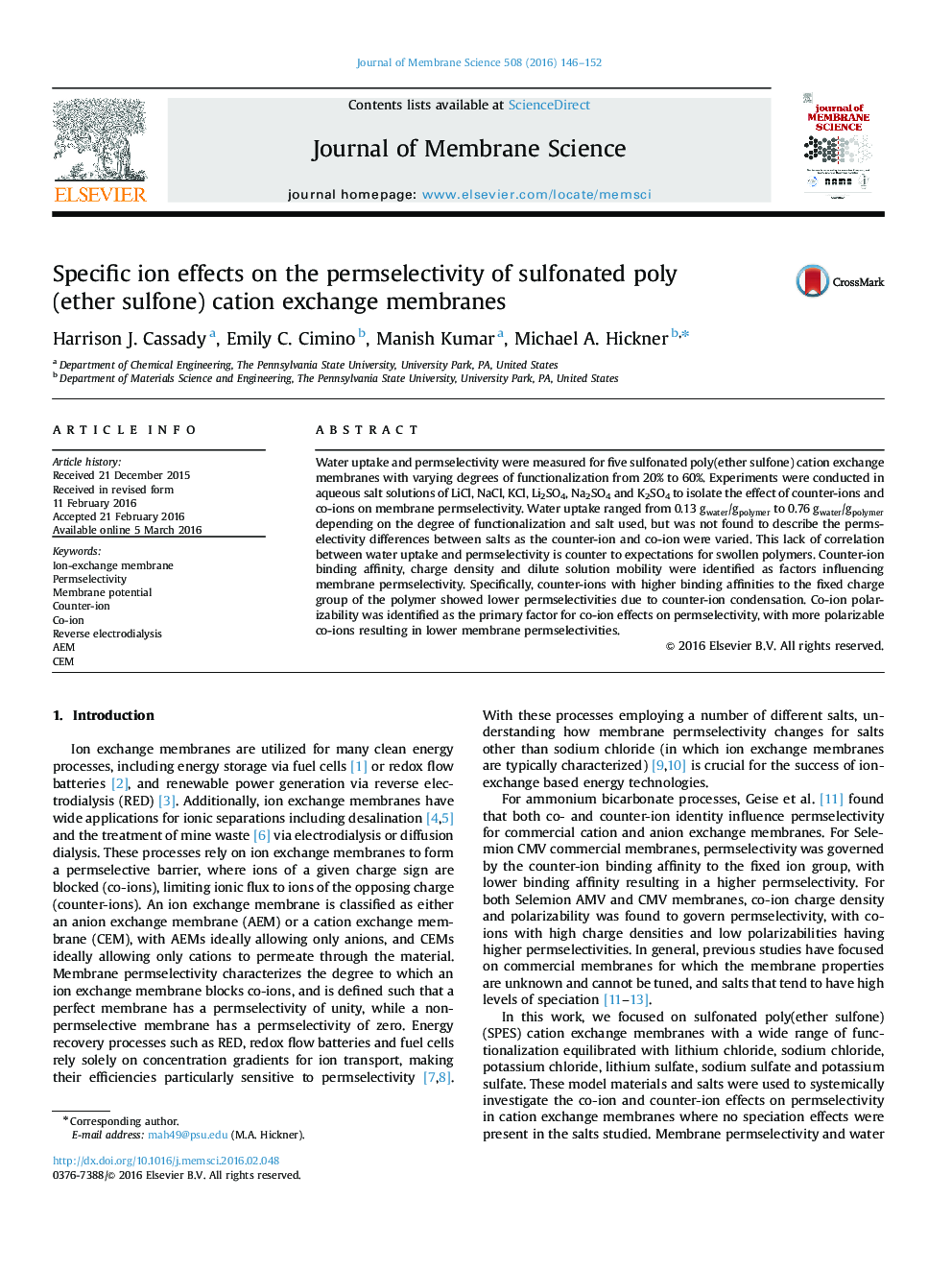| Article ID | Journal | Published Year | Pages | File Type |
|---|---|---|---|---|
| 632506 | Journal of Membrane Science | 2016 | 7 Pages |
•Membrane permselectivity depends on the specific salt used for characterization.•Higher counter-ion binding affinity results in lower permselectivity.•Higher co-ion polarizability results in lower permselectivity.•Water uptake does not describe permselectivity differences between various salts.
Water uptake and permselectivity were measured for five sulfonated poly(ether sulfone) cation exchange membranes with varying degrees of functionalization from 20% to 60%. Experiments were conducted in aqueous salt solutions of LiCl, NaCl, KCl, Li2SO4, Na2SO4 and K2SO4 to isolate the effect of counter-ions and co-ions on membrane permselectivity. Water uptake ranged from 0.13gwater/gpolymer to 0.76gwater/gpolymer depending on the degree of functionalization and salt used, but was not found to describe the permselectivity differences between salts as the counter-ion and co-ion were varied. This lack of correlation between water uptake and permselectivity is counter to expectations for swollen polymers. Counter-ion binding affinity, charge density and dilute solution mobility were identified as factors influencing membrane permselectivity. Specifically, counter-ions with higher binding affinities to the fixed charge group of the polymer showed lower permselectivities due to counter-ion condensation. Co-ion polarizability was identified as the primary factor for co-ion effects on permselectivity, with more polarizable co-ions resulting in lower membrane permselectivities.
Graphical abstractFigure optionsDownload full-size imageDownload high-quality image (297 K)Download as PowerPoint slide
